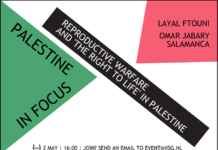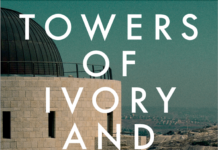Abdaljawad Omar
Mondoweiss / July 6, 2023
The resurgent resistance in Jenin shows that a narrow refugee camp with limited capabilities can slow an entire army and preserve its capacity to resist.
Carl von Clausewitz had a unique theory on the capacity to resist. He disdained the kinds of warfare that required soldiers, in an almost tragic sense, to die facing the enemy instead of hiding or retreating. He preferred establishing a different sort of relationship between confrontation and retreat, one that didn’t exalt one choice as a truly heroic act of bravery while decrying the other as an act of cowardice. Instead, Clausewitz developed new principles for guerilla warfare that regarded the ability of the resistance to survive and reinvent itself as the ultimate goal, hence rendering the decision to fight or retreat as part of the same dynamic concept, which prioritized the longevity of resistance.
During the past two years, the resistance in the West Bank has been fighting for its very existence and survival, and there are a number of reasons why Jenin refugee camp is not only still standing, but has grown and evolved. One of those reasons is the more immediate concerns that the birth of the Lions’ Den in Nablus has raised for the Shabak by virtue of the geographic proximity of Nablus to the West Bank’s northern settlement blocs, meaning that an armed presence in Nablus posed a more significant danger to the daily life of settlers in the area. That’s why the brunt of the counterinsurgency strategy of the occupation’s forces was focused on the Nablus region, and it was somewhat successful in containing the phenomenon — at least in its initial form, as the Lions’ Den was left reeling from attrition and the inability to build a safe haven that it could fortify with different defensive tools.
The second reason for Jenin’s relative success has to do with the kind of organizational relationships that existed in the camp, and their ability to rein in internal conflict. This helped shield the resistance from social interventions on the part of the Palestinian Authority, such as the propagation of rumors, the sowing of distrust, or even enticing the resistance fighters themselves. In other words, the presence of certain social and political conditions in Jenin refugee camp helped build a general social consciousness that bolstered the resistance and remained hostile to any political discourse that attempted to undermine it.
And finally, the third reason relates to the kinds of tactics employed by the enemy to contain and defeat the armed groups — quick interventions that primarily made use of special forces based on specific intelligence, meaning that those kinds of operations occurred intermittently and didn’t deal decisive blows to the ability of the resistance to persevere. The army did not engage in wide-ranging arrest campaigns in Nablus and Jenin because it did not want to sacrifice its soldiers, but it also feared that the fight would spread to Palestinian society as a whole, and it wanted to avoid condemnation for the cold-blooded killings it would carry out. Special operations units, therefore, presented themselves as a solution, albeit a slow one. This allowed the resistance the opportunity to develop an entire infrastructure in Jenin refugee camp.
Heavy infantry, heavy movement
After containing the Lions’ Den in Nablus, military units turned their attention to Jenin refugee camp, carrying out several operations on the camp’s peripheries and occasionally inside the camp. Every time, they were faced with novel methods of resistance — increasingly larger IEDs, heavy fire from the resistance, and several ambushes. This made the camp difficult terrain to manage, especially from the point of view of “operational freedom” often touted by the army — that is, the ability to move freely anywhere in the West Bank.
That is why, despite the downplaying of the recent operation as limited in scope, it nonetheless required marshaling 1000 soldiers, which incidentally is the same size as the force that was mobilized for the Battle of Jenin in 2002. But set against the operation’s backdrop is also a political battle relating to the need to satisfy settler leaders — in short, the mounting pressure for the army to be able to claim some sort of victory, especially in regaining operational freedom in Jenin, and the calls from settler leaders to decisively end the resistance there without paying heed to certain “calculations,” like civilian casualties or the need for a European and American diplomatic cover.
These tensions led to the insistence on downplaying the scope of the operation. This is where the army’s uncertainty over the naming of the operation came in, from dubbing it “Operation Home and Garden” in reference to protecting West Bank settlements, to refusing to give it a name entirely. The operation also vacillated between the army spokesman’s claims about targeting and eliminating the fighters themselves and the insistence on destroying and dismantling the infrastructure of the resistance groups.
Moreover, the operation in Jenin was led by various special operations units, including the Maglan (an elite unit operating behind enemy lines), the Egoz (specializing in guerilla warfare), and the Duvdevan (specializing in undercover operations). This means that the regular army is not directly engaged with the resistance.
The army also tried to advertise the operation’s expertise, emphasizing the close coordination with the intelligence and their inclusion in the military units, as well as the constant presence of air support for the ground force and the absence of any direct friction with the resistance. These kinds of close skirmishes are to the advantage of the resistance groups, somewhat tipping the scales of the battle in their favor.
At the heart of it, the army strives to maintain a safe distance that allows it to utilize its airpower or other forms of firepower that are superior to that of the resistance — indeed, the operation started with an airstrike, and the majority of the martyrs were killed either in those airstrikes or by sniper fire. In essence, the army became a slow and plodding military force that wanted to avoid suffering losses in the middle of an overcrowded refugee camp, aiming, above all, for every confrontation with the resistance to be a fight without a battle.
What we can say so far is that the army’s inflation of the operation’s achievements in dismantling the infrastructure of the resistance is a sign of its weakness, grounded in an impossible criterion of zero tolerance for Israeli casualties. The true infrastructure of the resistance in Jenin are the fighters themselves and their will to resist. All the talk about the uncovering of bomb-making laboratories and underground tunnels is merely an attempt to dress up relatively minor achievements in light of the army’s avoidance of close combat with resistance fighters, and the structure of the resistance can’t be fragmented through the targeting of four or five locations, the confiscation of explosives, or the destruction of a few tunnels.
The danger of the operation lies in what comes after. Will this operation mean the return of special operations within the heart of the camp, thus allowing the enemy the operational freedom that it has lost in recent months, and which also allows for the return of the methods of slow containment and assassination employed against the Lions’ Den? Or will the operation fail to produce this reality? And finally, will the results of the operation help the enemy better plan future operations based on the experience it just gained?
Preserving the capacity to resist
It also appears that the resistance benefitted from the camp’s terrain —inside its houses, above-ground and below — that allowed it to advance and retreat. When it did come into direct contact with the army forces, it did not suffer major casualties, but was, in fact, able to initiate a number of skirmishes before retreating unharmed.
Moreover, the state of mind of the resistance does not seem to indicate panic, fear, or hesitation, but rather an understanding of when to avoid confrontation when it is not in its favor, and how to engineer fighting conditions to preserve the ability to resist, impede, or delay the military operation or its goals.
This is the heart of the situation in the camp; the resistance is avoiding engaging in a “final battle” — even if the fighters are ready to sacrifice everything for the sake of resistance. In other words, the resistance is displaying a level of fighting flexibility that indicates combat maturity, employing the ability to appear, disappear, and then reappear with a dynamism that frightens the enemy, making the army afraid of leading its soldiers into ambushes that would result in several casualties. The importance of the skirmishes that took place is that they slowed the army’s advance and encumbered its movement. At the same time, the confrontations were quick and fleeting, designed to protect the resistance fighters.
In other words, we now have before us a defensive strategy comprised of different elements that enjoy a considerable degree of flexibility, aimed primarily at preserving what Clausewitz called the capacity to resist. This in and of itself is a sufficient victory for the resistance, even if it does not kill a single soldier. It reflects the failure of the enemy to kill or arrest resistance fighters and is a victory in that it makes military operations in the camp’s perimeter more complicated.
There is a great deal of criticism on social media of the performance of the various resistance movements outside of Jenin in not joining the battle or aiding the camp. Most of these comments betray a degree of anxiety over the occupation’s ability to wipe out the resistance in Jenin. But what is clear is that the enemy is taking seriously the likelihood of Gaza or Lebanon entering the fray if the battle rages on — in fact, its operational plans incorporate it as a possible scenario. What this means is that “the unity of fields” has entered into the army’s calculus in planning for a military operation.
Still, the existing consensus is that the Gaza Strip still reels from the previous rounds, and will therefore try to avoid joining the fight. It seems that the Jenin refugee camp does not require this type of support so far — it is sufficient for there to be an implicit threat of the possibility of Gaza’s intervention.
We don’t know what the coming days will hold, nor how the phenomenon of armed resistance will develop in Jenin. It also isn’t entirely clear whether the terms of engagement will remain limited to two sides attempting to avoid direct confrontation, or whether things will escalate beyond that point. But what the last few days have provided is a snapshot of the resurgent resistance in Jenin refugee camp. The persistence of this phenomenon will remain a source of concern to many, especially the forces that oppose it, because it demonstrates that a narrow refugee camp with limited capabilities, and without many elements of support, is forcing an entire army to advance at a snail’s pace.
Abdaljawad Omar is a PhD student and part-time lecturer in the Philosophy and Cultural Studies Department at Birzeit University












